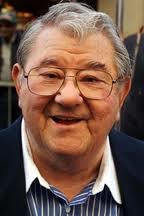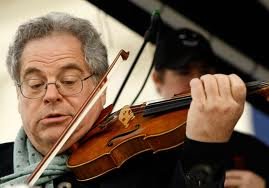A blue moon is an additional full moon that appears in a subdivision of a year: the third of four full moons in a season.
The phrase in modern usage has nothing to do with the actual color of the Moon, although a visually blue Moon (the Moon appearing with a bluish tinge) may occur under certain atmospheric conditions—for instance, if volcanic eruptions or fires release particles in the atmosphere of just the right size to preferentially scatter red light.

Cutlery (also referred to as silverware, flatware, or tableware), includes any hand implement used in preparing, serving, and especially eating food in Western culture. A person who makes or sells cutlery is called a cutler. The city of Sheffield in England has been famous for the production of cutlery since the 17th century and a train – the Master Cutler – running from Sheffield to London was named after the industry. Bringing affordable cutlery to the masses, stainless steel was developed in Sheffield in the early 20th century.The major items of cutlery in Western culture are the knife, fork and spoon. These three implements first appeared together on tables in Britain in the Georgian era. In recent times, hybrid versions of cutlery have been made combining the functionality of different eating implements, including the spork (spoon / fork), spife (spoon / knife), and knork (knife / fork). The sporf or splade combines all three.
Etymology
The word cutler derives from the Middle English word 'cuteler' and this in turn derives from Old French 'coutelier' which comes from 'coutel'; meaning knife (modern French: couteau). The word's early origins can be seen in the Latin word 'culter' (knife).
Metallic
Sterling silver is the traditional material from which good quality cutlery is made. Historically, silver had the advantage over other metals of being less chemically reactive. Chemical reactions between certain foods and the cutlery metal can lead to unpleasant tastes. Gold is even less reactive than silver, but the use of gold cutlery was confined to the exceptionally wealthy, such as monarchs.
Steel was always used for more utilitarian knives, and pewter was used for some cheaper items, especially spoons. From the nineteenth century, electroplated nickel silver (EPNS) was used as a cheaper substitute for sterling silver.
Wood:
In 1913, the British metallurgist Harry Brearley discovered stainless steel by chance, bringing affordable cutlery to the masses. This metal has come to be the predominant one used in cutlery. An alternative is melchior, corrosion-resistant nickel and copper alloy, which can also sometimes contain manganese and nickel-iron.
Plastic
Plastic cutlery is made for disposable use, and is frequently used outdoors for camping, excursions, and barbecues for instance. Plastic cutlery is also commonly used at fast-food or take-away outlets and provided with airline meals in economy class. Plastic is also used for children's cutlery. It is often thicker and more durable than disposable plastic cutlery.
Disposable cutlery
Plastic
Introduced for convenience purposes (lightweight, no cleanup after the meal required), disposable cutlery made of plastic has become a huge worldwide market. Along with other disposable tableware (paper plates, plastic table covers, disposable cups, paper napkins, etc.), these products have become essential for the fast food and catering industry. The products are emblematic of throw-away societies and the cause of millions of tons of non-biodegradable plastic waste. The European Union has banned such plastic products from 3 July 2021 as part of the European Plastics Strategy. Bans are also planned in the UK and Canada.
Traditional centers of cutlery-making include:
- 1 loaf (12 ounces) French bread, unsliced
- 1 bottle (8 ounces) Russian or Thousand Island dressing (1 cup)
- 12 ounces sliced corned beef
- 1 can (14.4 ounces) sauerkraut, well drained
- 5 slices Swiss cheese
- Preheat oven to 400º.
- Cut the bread in half lengthwise (horizontally) and slightly hollow out the center of each half by removing the soft center 1/2-inch deep on each side. Spread each hollowed-out half with 1/2 cup of the dressing.
- Place corned beef on bottom half of the loaf. Top with the sauerkraut and cheese. Place remaining half loaf on top of cheese. Wrap sandwich loosely in foil and bake for 20 minutes or until heated through. Cut into 6 pieces and serve.
***You can use rye bread instead of French bread if you'd rather, but it tends to be a bit harder to cut and eat.
1945 – Itzhak Perlman, Israeli violinist
Friends, fresh air, and good food are the focus of National Eat Outside Day every year on August 31. Whether at home, a park, a favorite restaurant or food truck, or the beach, food just tastes better when we eat it under the open sky.
Many foods lend themselves to eating outdoors but sometimes it’s as simple as taking your prepared plate out to the balcony, porch, or patio. Also known as al fresco dining, many restaurants offer patio seating so their patrons can enjoy their meals while taking in the city, beach, countryside or just people watch. Even more temperate climates offer seasonal outdoor dining.
Eat Outside Day encourages you to taste the sunshine (or the moonlight) while eating your meal. It’s like a mini stay-cation where you get to recharge while enjoying a delicious feast outdoors.
HOW TO OBSERVE National Eat Outside Day
National Eat Outside Day offers limitless possibilities to celebrate! Try these ideas:
- Host an outdoor brunch or just take your bacon and eggs outside to enjoy.
- Take your sack lunch outside to eat during your break.
- Pack a picnic basket and head to the park.
- Visit your favorite restaurant and sit on the patio this time.
- Invite friends over for a BBQ.
- Take a dinner river cruise.
- Pack some sandwiches and trail mix and go for a hike.
- Stay up late, pop some popcorn, make cheese and crackers or grab the leftovers. Spread a blanket under the stars and look for constellations while snacking.
- Organize an outdoor potluck.
- Host your book club outdoors with all your favorite foods and beverages.
- Go camping. You’re nearly guaranteed to eat outdoors when you’re in the Great Outdoors.
- Take a cue from your garden. Wash off those ripening vegetables and fruits with a spritz from the hose and savor your bounty.
Eat Outside FAQ
Q. What does “al fresco” mean?
A. It means “in the air” and typically is used to reference outdoor dining.
Q. Is outdoor dining a new fad?
A. Not really. Humans have been eating outdoors for centuries. Sometimes out of necessity (caves, huts, teepees, covered wagons don’t always have a lot of space for indoor eating).
Q. What are some of the best foods to eat outdoors?
A. Just about anything can be eaten outdoors depending on the setting. However, some foods are better than others when it comes to portability and convenience. Sandwiches, finger foods, fresh fruits and vegetables all fit the picnic profile. When we’re cooking at home, nearly anything can be on the menu – including soup.
You can do this as long as you are not in the middle of a hurricane of an area with wildfires and super smokey air!
































